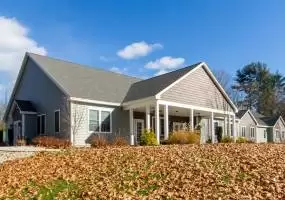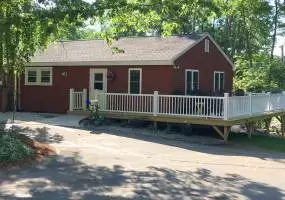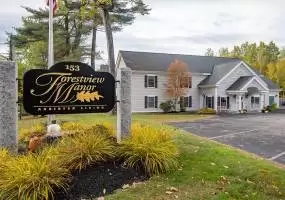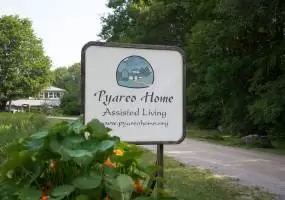![]()
Exploring Retirement Options:
Assisted Living vs. Independent Living
As older Americans contemplate their retirement choices, the traditional options of staying at home or transitioning to a nursing home no longer define the landscape. With the burgeoning population of seniors aged 65 and above, there’s a growing array of alternatives for those seeking to maintain their independence with a touch of assistance. While nursing homes cater to individuals requiring extensive medical attention, assisted living homes and independent living communities emerge as viable alternatives for older adults not in need of such intensive care.
Independent living communities, also known as Senior Communities or Retirement Communities, offer apartment-style living imbued with a vibrant social atmosphere. Tailored for active older adults, these communities cater to individuals who can manage their daily activities without assistance or medical intervention.
In contrast, assisted living facilities provide a blend of light medical care and personal assistance, encompassing grooming, mobility aid, and 24-hour on-site staff availability for emergencies. Resembling independent living in terms of private accommodations and social engagement opportunities, assisted living is geared towards individuals who require support with certain daily tasks.
This guide delves deeper into the nuances of Independent Living and Assisted Living, exploring typical care provisions, available amenities, and delineating the ideal candidates for each type of care.
Asssited Living
Independent Living
Setting
Social
Social
Care Provided
Help with ADLs, Medication Management, Housekeeping, Laundry
Property management and maintenance services
Cost
Approx. $4,300 per month in the US
Annual costs run from $12,000 to $42,000
Who Should Consider It
Those who need help with ADLs
Active Adults who wish to simplify their lives
Assisted Living: Bridging Independence and Care
Assisted living serves as a pivotal bridge between maintaining independence at home and transitioning to the comprehensive care of a nursing home. These communities offer apartment-style living, ranging from studios to one- or two-bedroom suites, enabling spouses or lifelong friends to reside together. Thoughtfully designed with the mobility needs of seniors in mind, accommodations feature wider hallways, shower grab bars, and emergency call buttons in bathrooms and living areas. Essential services like light housekeeping, linen maintenance, and routine upkeep are included in the room and board fees.
Professionally trained staff members are available around the clock to assist residents with daily tasks such as bathing, dressing, mobility support, and assistance with feeding or toileting. Meals are provided in a communal dining setting, with a variety of menu options catering to diverse dietary needs, including low-salt, Kosher, vegetarian, or diabetic-friendly choices. Many assisted living apartments also feature kitchen areas for residents to prepare their own meals and snacks.
Moreover, a nurse typically remains on-site during business hours to address health concerns, recommend advanced medical care, and oversee medication management. To combat loneliness and foster social engagement, Activity Directors organize a plethora of games, events, and group outings throughout the week. Assisted living communities also offer communal spaces for hobby groups, libraries, fitness centers, and transportation services for errands and medical appointments. Private parking is often available, and amenities such as private walking paths, gardening areas, and pools or hot tubs further enrich residents’ lifestyles.
According to the Genworth Financial Cost of Care Survey 2020, the average monthly cost of assisted living stands at $4,300. However, it’s essential to recognize that costs may vary significantly depending on location and the range of amenities provided.
Assisted living accommodations are ideally suited for seniors requiring some level of assistance and seeking a vibrant community environment. While some individuals may opt to hire outside help to remain in their own homes, those desiring a more social and supportive setting often find assisted living to be an enriching choice, particularly if they lack nearby family or friends for support.
Independent Living: Embracing Active Adult Lifestyles
Independent living communities offer apartment-style residences tailored for active adults seeking a vibrant lifestyle. Distinguished from assisted living, these communities do not provide personal care or on-site medical attention. However, residents benefit from the presence of a property manager during business hours, ensuring prompt maintenance service and 24-hour emergency assistance. Although medical care is not typically included in monthly fees, residents may choose to engage a home health aide for recovery from illness or injury.
Residents of senior living communities enjoy the freedom to come and go as they please, with many maintaining their own vehicles. While some transportation services may be available, or communities may be conveniently located near public transit options, the allure of these communities lies in their apartment-style luxury. Complete with full kitchens, private laundry facilities, and inviting patios or porches, these residences offer the comforts of home. On-site restaurants further enhance the social dining experience, providing an alternative to home cooking.
The social dimension is a cornerstone of these communities, with common areas designed to facilitate interaction and community events such as happy hours, game nights, and movie screenings. Swimming pools, fitness centers, and a variety of fitness classes cater to residents’ active lifestyles. Outdoor amenities such as patios and barbecue areas foster a sense of camaraderie, while pet-friendly policies ensure furry companions are welcome.
One of the primary attractions of independent living is the freedom to entertain visitors, including overnight guests, as desired. For seniors, maintaining an active lifestyle and fostering community connections while relinquishing the burdens of homeownership are compelling reasons to choose independent living.
Costs for these communities typically range between $12,000 and $42,000 per year, varying based on location and available amenities. Some independent living homes offer optional add-on services such as meal plans, housekeeping, and golf course memberships. Additional fees, such as pet or parking charges, may also apply.
Independent living is ideally suited for seniors who do not require ongoing personal or medical care and can independently manage self-care tasks and other activities of daily living, including medication management and bill payment.
Can I hire an in-home nurse at independent living?
Yes, although these services are not included in independent living fees.
Can I have visitors in assisted living?
Each facility is different. Some may have visiting hours but not allow overnight visitors, while others may allow a spouse or family member to stay the night with prior approval.
Can I keep my pet?
Registered service animals may be the only animals allowed at some assisted living homes. In contrast, other homes may allow residents to keep a pet so long as the pet stays in the resident’s apartment. Most independent living communities allow pets as long as management approves of the animal.
Will my insurance or Medicaid cover housing in these communities?
Health insurance typically won’t pay for accommodations in independent living. However, some programs may pay for assisted living, or seniors may apply for a Medicaid Waiver in their state to help offset the costs of assisted living.
NH Assisted Living By Region
- Bedford NH Assisted Living
- Manchester NH Assisted Living
- Portsmouth NH Assisted Living
- NH Seacoast Assisted Living
- Lakes Region Assisted Care NH
- Sunapee NH Assisted Living
- White Mountains
- Monadnock
- Great North
- What’s the difference between assisted living and nursing care?
- Community spotlight: active adult living
- Your Type – Active Adult Living










